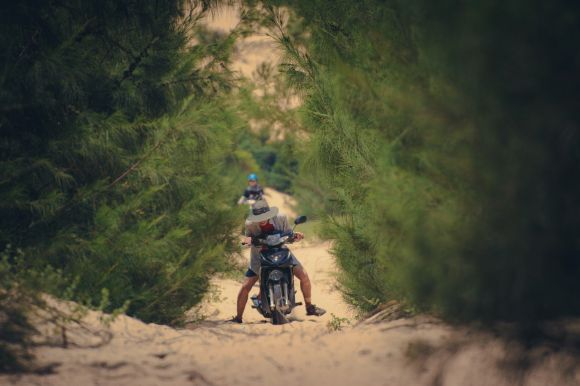Riding off-road can be an exhilarating experience, but it can also pose unique challenges, especially when riding in low light conditions. Whether you’re hitting the trails at dawn or dusk, or simply find yourself on a shaded path, it’s important to take the necessary precautions to ensure your safety and enjoyment. In this article, we will explore some essential tips and techniques for riding off-road in low light conditions.
Choosing the Right Gear
Before heading out on your off-road adventure, it’s crucial to choose the right gear for low light conditions. Start by investing in a high-quality headlamp or bike light that provides a bright beam and a long battery life. Look for lights specifically designed for off-road riding, as they tend to have a wider beam pattern and offer better visibility on uneven terrain.
Additionally, consider wearing reflective gear such as a vest or ankle bands to enhance your visibility to other trail users. This will not only help you stay safe, but it will also make you more noticeable to others, reducing the risk of collisions.
Adjusting Your Riding Technique
When riding off-road in low light conditions, it’s important to adjust your riding technique to ensure a smooth and safe experience. One of the key aspects to focus on is your line choice. In low light conditions, it can be harder to see obstacles and hazards on the trail, so it’s important to choose a line that offers the best visibility. This may mean staying closer to the center of the trail or opting for wider lines that allow you to see further ahead.
Another crucial aspect to consider is your speed. Riding at a moderate pace can help you react quickly to any unexpected obstacles or changes in the trail. It’s also important to remember that your depth perception may be compromised in low light conditions, so giving yourself ample time to assess the trail ahead is essential.
Navigating Technical Terrain
Navigating technical terrain in low light conditions can be particularly challenging. To overcome these challenges, it’s important to focus on three key elements: balance, control, and anticipation.
Maintaining your balance is crucial when riding through technical sections. Keep your weight centered and use your body as a shock absorber to maintain traction and control over your bike. Additionally, try to anticipate any unexpected changes in the trail, such as roots or rocks, and adjust your body position accordingly.
Maintaining control over your bike is equally important. Ensure that your brakes and suspension are properly adjusted and use them judiciously to maintain control over your speed. Remember to use your body as a counterbalance, shifting your weight forward or backward as needed to maintain traction and stability.
Anticipation is the key to successfully navigating technical terrain in low light conditions. Look ahead and scan the trail for any potential obstacles or changes in terrain. This will give you time to react and adjust your line or speed accordingly.
Conclusion
Riding off-road in low light conditions can present unique challenges, but with the right gear and techniques, it can also be an incredibly rewarding experience. By choosing the right gear, adjusting your riding technique, and navigating technical terrain with balance, control, and anticipation, you can safely and confidently enjoy your off-road adventures, even in low light conditions. So, grab your gear, hit the trails, and embrace the thrill of riding off-road in the twilight hours.
